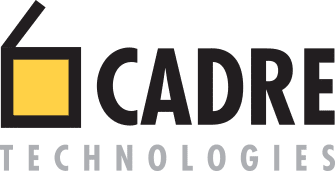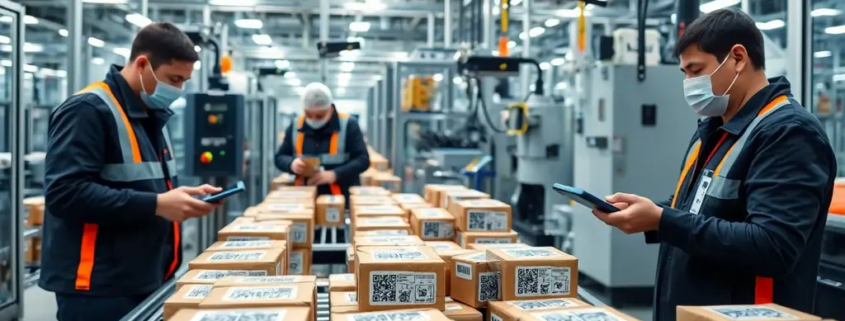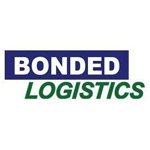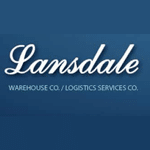Understanding Supply Chain Serialization
A Comprehensive Guide to Understanding Supply Chain Serialization
Supply chain serialization is a pivotal element in modern logistics and warehouse management, ensuring that products are traceable and secure from the point of manufacture to the consumer’s hands. As global supply chains become increasingly complex, serialization offers a robust solution to enhance transparency and accountability. This guide delves into the significance of serialization, its benefits, implementation strategies, challenges, and future trends, providing supply chain professionals with the insights needed to harness its full potential.
What is Supply Chain Serialization?
Serialization in the supply chain refers to the process of assigning a unique identifier to each product unit, enabling precise tracking throughout the entire supply chain. This identifier, often a barcode or RFID tag, is akin to a digital fingerprint for products, ensuring that each item can be traced back to its origin. The primary role of serialization in supply chain management is to enhance product visibility and traceability, which is crucial for maintaining quality control and ensuring compliance with industry regulations.
Serialization is not merely about assigning numbers; it’s about creating a comprehensive system that integrates with existing supply chain processes to provide real-time data and insights. This system allows companies to track products at every stage, from production to distribution, and ultimately to the end consumer. By doing so, businesses can significantly reduce the risk of counterfeit products entering the market and improve overall supply chain efficiency.
Key Benefits of Implementing Serialization in Supply Chains
Enhancing Traceability and Accountability
One of the most significant advantages of serialization is its ability to enhance traceability and accountability within the supply chain. By providing each product with a unique identifier, companies can track the movement of goods with precision. This capability is particularly beneficial in industries such as pharmaceuticals and food, where product safety and authenticity are paramount. Enhanced traceability ensures that any discrepancies or issues can be quickly identified and addressed, minimizing the risk of widespread problems.
Improving Safety and Reducing Counterfeit Products
Counterfeit products pose a severe threat to consumer safety and brand reputation. Serialization helps combat this issue by enabling companies to verify the authenticity of their products at every stage of the supply chain. By ensuring that only genuine products reach consumers, serialization protects both the brand and the end user. Moreover, in the event of a safety issue, serialization allows for swift and targeted recalls, reducing the potential impact on consumers and the company.
Streamlining Recalls and Managing Returns More Effectively
Recalls and returns are inevitable in any supply chain, but serialization can make these processes more efficient and less costly. With serialization, companies can quickly identify affected products and remove them from the market with minimal disruption. This capability not only saves time and resources but also helps maintain consumer trust by demonstrating a commitment to safety and quality. Additionally, serialization facilitates better management of returns by providing detailed information about each product’s journey through the supply chain.
Step-by-Step Guide to Implementing Serialization
Assessing Your Current Supply Chain Processes
Before implementing serialization, it’s essential to conduct a thorough assessment of your current supply chain processes. This assessment should identify areas where serialization can add the most value and highlight any potential challenges or limitations. Understanding your existing infrastructure and capabilities will help you develop a tailored serialization strategy that aligns with your business goals.
Choosing the Right Serialization Technology and Partners
Selecting the appropriate serialization technology is crucial for successful implementation. Technologies such as RFID, barcodes, and QR codes each have their advantages and limitations, so it’s important to choose the one that best fits your needs. Additionally, partnering with experienced serialization providers can offer valuable expertise and support throughout the implementation process. These partners can help ensure that your serialization system is robust, scalable, and compliant with industry standards.
Integration with Existing Supply Chain Management Systems
Integrating serialization with your existing supply chain management systems is a critical step in the implementation process. This integration allows for seamless data exchange and ensures that serialization enhances, rather than disrupts, your current operations. It’s essential to work closely with your IT and operations teams to ensure that the serialization system is compatible with your existing infrastructure and processes. Proper integration will enable you to leverage the full benefits of serialization, including improved data accuracy and real-time visibility.
Common Challenges in Supply Chain Serialization
Technical Integration Issues
One of the primary challenges in implementing serialization is the technical integration with existing systems. Ensuring compatibility and seamless data flow between serialization technologies and current supply chain management systems can be complex. Companies must invest in robust IT infrastructure and skilled personnel to address these challenges and ensure a smooth transition.
Compliance with Global and Regional Regulations
Serialization often involves navigating a complex landscape of global and regional regulations. For instance, the pharmaceutical industry must comply with the Drug Supply Chain Security Act (DSCSA) in the United States, which mandates serialization for certain products. Companies must stay informed about relevant regulations and ensure that their serialization systems are compliant to avoid potential legal and financial penalties.
Managing Data Security and Privacy Concerns
Data security and privacy are critical concerns in any serialization initiative. The vast amount of data generated by serialization systems must be protected against unauthorized access and breaches. Companies must implement robust security measures, such as encryption and access controls, to safeguard sensitive information. Additionally, it’s important to establish clear data governance policies to ensure that data is used ethically and responsibly.
Case Studies: Successful Supply Chain Serialization
Real-World Examples of Companies That Have Effectively Implemented Serialization
Several companies have successfully implemented serialization, reaping significant benefits in terms of traceability, safety, and efficiency. For example, a leading pharmaceutical company implemented serialization to comply with the DSCSA and saw a marked improvement in its ability to track and trace products. This implementation not only enhanced compliance but also improved inventory management and reduced the risk of counterfeit products entering the market.
Lessons Learned and Best Practices from These Implementations
From these successful implementations, several best practices have emerged. Companies should prioritize thorough planning and stakeholder engagement to ensure a smooth transition. Additionally, investing in employee training and change management can help overcome resistance and ensure that staff are equipped to leverage the new system effectively. Finally, continuous monitoring and optimization of the serialization system can help identify areas for improvement and ensure long-term success.
Future Trends in Supply Chain Serialization
Emerging Technologies and Their Potential Impact
The future of supply chain serialization is likely to be shaped by emerging technologies such as blockchain and the Internet of Things (IoT). Blockchain offers the potential for enhanced transparency and security by providing an immutable record of each product’s journey through the supply chain. Meanwhile, IoT devices can provide real-time data on product conditions, such as temperature and humidity, further enhancing traceability and quality control.
Predictions for Serialization in the Global Supply Chain Landscape
As globalization continues to drive complexity in supply chains, serialization will become increasingly important for maintaining control and visibility. Companies that embrace serialization will be better positioned to navigate regulatory requirements, protect their brands, and meet consumer demands for transparency and safety. In the coming years, we can expect to see more widespread adoption of serialization across industries, driven by technological advancements and evolving consumer expectations.
Cadre Technologies: Enhancing Supply Chain Serialization with Advanced WMS Solutions
As supply chain serialization continues to play a crucial role in modern logistics, Cadre Technologies provides warehouse management solutions that help businesses achieve seamless product tracking and compliance. Cadre’s WMS (Warehouse Management System) is designed to integrate with serialization technologies like RFID, barcodes, and QR codes, enabling real-time visibility into inventory movement.
With Cadre’s solutions, businesses can:
- Improve Traceability: Track serialized products at every stage of the supply chain, reducing the risk of counterfeiting and improving regulatory compliance.
- Enhance Inventory Management: Automate data capture to ensure accuracy and optimize warehouse operations.
- Streamline Recall Processes: Quickly locate affected products with precise tracking capabilities, minimizing disruptions and costs.
- Ensure Compliance: Maintain compliance with industry regulations, such as DSCSA for pharmaceuticals and food safety requirements, with robust serialization integration.
Cadre Technologies’ WMS empowers supply chain professionals with the tools needed to implement serialization effectively, helping businesses maintain transparency, security, and efficiency in their logistics operations.
Conclusion
In conclusion, supply chain serialization is a powerful tool for enhancing traceability, safety, and efficiency in modern logistics. By providing unique identifiers for products, serialization enables companies to track goods with precision, combat counterfeiting, and streamline recalls. While challenges such as technical integration and regulatory compliance exist, the benefits of serialization far outweigh these obstacles. As the supply chain landscape continues to evolve, serialization will play an increasingly vital role in ensuring transparency and accountability. Supply chain professionals who embrace serialization will be well-equipped to meet the demands of a dynamic and competitive market.
Ready to Enhance Your Supply Chain Serialization?
Discover how Cadre Technologies’ WMS can support your serialization efforts. Contact us today to learn more!
Frequently Asked Questions (FAQ)
Why is serialization important in supply chains?
Serialization is crucial in supply chains because it provides unique identifiers for products, enhancing traceability and security. This capability is essential for maintaining product integrity, ensuring compliance with regulations, and protecting consumers from counterfeit goods. By enabling precise tracking, serialization helps companies manage recalls more effectively and maintain consumer trust.
What technologies are commonly used in supply chain serialization?
Common technologies used in supply chain serialization include RFID, barcodes, and QR codes. RFID tags allow for wireless tracking of products, providing real-time data on their location and status. Barcodes and QR codes offer a cost-effective solution for identifying and tracking products throughout the supply chain. Each technology has its advantages, and the choice depends on the specific needs and constraints of the supply chain.
How does serialization impact supply chain management?
Serialization significantly impacts supply chain management by improving inventory accuracy, enhancing product traceability, and increasing the efficiency of recall processes. By providing detailed information on each product’s journey, serialization enables companies to optimize their operations, reduce waste, and respond quickly to issues. This capability not only enhances operational efficiency but also strengthens brand reputation and consumer trust.
What are the regulatory considerations for implementing serialization?
When implementing serialization, companies must consider various regulatory requirements, which can vary by region and industry. For example, the Drug Supply Chain Security Act (DSCSA) in the U.S. mandates serialization for certain pharmaceutical products. Companies must ensure that their serialization systems comply with relevant regulations to avoid legal and financial penalties. Staying informed about regulatory changes and working with experienced partners can help navigate this complex landscape.
Can small to medium enterprises benefit from serialization?
Yes, small to medium enterprises (SMEs) can benefit significantly from serialization. By improving inventory accuracy and enhancing security measures, serialization helps SMEs optimize their operations and reduce costs. Additionally, serialization can provide a competitive advantage by demonstrating a commitment to quality and safety, which can enhance brand reputation and customer loyalty. Despite the initial investment, the long-term benefits of serialization make it a worthwhile strategy for SMEs.













